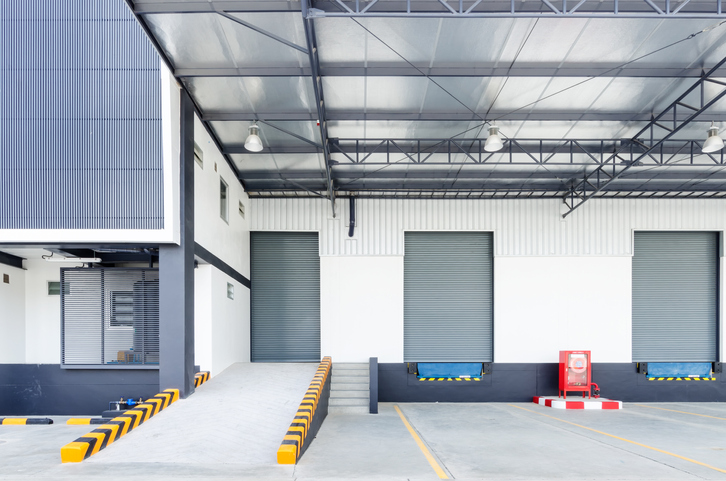The Monthly Metric: Dock-to-Stock Cycle Time

In the age of shipment tracking, one status has been designed to provide the illusion of progress on a package: “label created.”
What does it indicate, exactly? “It means that the company is running behind,” says Brian Barry, president at F. Curtis Barry & Company, a Richmond, Virginia-based warehouse operations and fulfillment consultancy. “The label is created so the customer sees activity, but it could be days before anything else happens. And most customers quickly see through that.”
Barry advises client companies to be upfront about shipment status, and while that helps score honesty points, it doesn’t address warehouse inefficiency, which is usually that the ordered product is not in a pickable location. When that occurs, the breakdown can typically be measured by this month’s metric, dock-to-stock cycle time.
Dock-to-stock cycle time is a gauge of warehouse efficiency. It can be a challenging metric, as many of the dynamics impacting performance are beyond a company’s direct control. However, poor performance can indicate inadequate technology or mismanagement of a facility’s dock space and personnel. And the consequences are often felt downstream, in inventory management and order fulfillment.
“There are supply chain issues and vendor performance breakdowns you can’t always control,” Barry says. But while there are areas companies can control, “I don’t think enough have good systems in place where they can facilitate an efficient process. And frankly, they haven’t done all they can to make their warehouse employees effective.”
Meaning of the Metric
Dock-to-stock cycle time measures the time between when a delivery lands on a dock to when the goods are placed in a pickable or reserve bulk location. The benchmark is eight to 10 hours for best-in-class companies, Barry says, 12 to 24 hours for midsize organizations and up to 48 hours for those using a third-party logistics (3PL) provider. “There are a lot of nuances with a 3PL,” he says. “A 3PL needs a lot of flexibility because your company is not the only one in the facility, unless you’re in a dedicated warehouse with it.”
Since the cycle time involves PO writing and accounting, inbound transportation, supplier compliance, receiving, inspection, put away and warehouse management system (WMS) entry, a breakdown can be a result of widespread issues, Barry says. But in his experience, three culprits are most likely:
1) Insufficient or inefficient dock space. When a company moves into a new facility, Barry says, it’s tempting to think there is more dock space than could ever be used. But deliveries and pallets can quickly cover ground. “The available space gets smaller and creates significant congestion,” he says. “Soon, a company finds that it has squeezed the life out of its dock.”
Not only has the process become less efficient, he notes, but with employees and equipment navigating a tighter space, there are also heightened safety risks.
2) Outdated technology. Although WMS have increased in capability and affordability, Barry says, many companies still use ERP systems that are designed primarily for finance and accounting, not supply chains and logistics. For example, the inspection process can be slowed if a system cannot quickly identify a shipment by supplier and stock-keeping unit (SKU).
“If I’ve got a good system in the receiving process, I can do a quick (inspection), make sure there are no damages, and get it on the lift truck and down the aisle to be put away,” he says. “I don’t have to mess around. But you need a good system. Many organizations have legacy ERP systems that are inadequate.”
3) Personnel problems. This does not necessarily mean a shortage of workers. Among client companies, Barry has found that warehouse workers — and some managers — have not been adequately trained. This dynamic was exacerbated by the coronavirus pandemic and the dual challenges of social distancing in facilities and the crush of orders. “There were a lot of things we could have done better to prepare and accommodate workers,” Barry says.
He adds, “Unfortunately, half of companies are dealing with all three issues.” That’s why it’s critical for procurement to be attuned to breakdowns and at the forefront of solutions.
Consequences and Potential Fixes
Dock-to-stock ailments can be costly. For example, if a “label created” status or other product picking delay persists, a company might make a partial shipment, which forces it to pay for multiple shipments.
Effective solutions reduce movement, paperwork and handling. Barry recommends that procurement coordinate with the warehouse or distribution center during a time period of typical traffic and activity — tracking inbound shipments and using flow charts to track problems in the receipt-to-put-away process. It’s a great opportunity for supply managers, he says, “to take command and offer an objective look at what the warehouse is doing and help it work through the problems.”
Does the dock space provide maximum efficiency and flexibility? How much can a new or updated WMS help speed processes? Is automation an option? What about issues outside the warehouse, like a low first-time match rate on invoices, POs and receiving reports?
Another critical issue, Barry says, is supplier compliance. A company needs to be diligent about enforcing its delivery specifications, he says, and not be shy about insisting on the same levels of performance a giant retailer receives.
“The biggest companies have developed those processes and expectations,” he says. “And many smaller companies don’t know they can leverage that. If you need UPC barcodes on some products, (a supplier) might say that will cost more, but it could still be cheaper in the long run if your warehouse staff doesn’t have to do the labeling process on the receiving dock.”
Improving cycle time takes time, but improved inventory management, faster order fulfillment and cost savings are among the rewards for companies that can streamline the dock-to-stock process. “The downstream impact on operations — and most importantly, customer service — will be well with the investment,” Barry says.
To suggest a metric to be covered, email me at dzeiger@ismworld.org.

